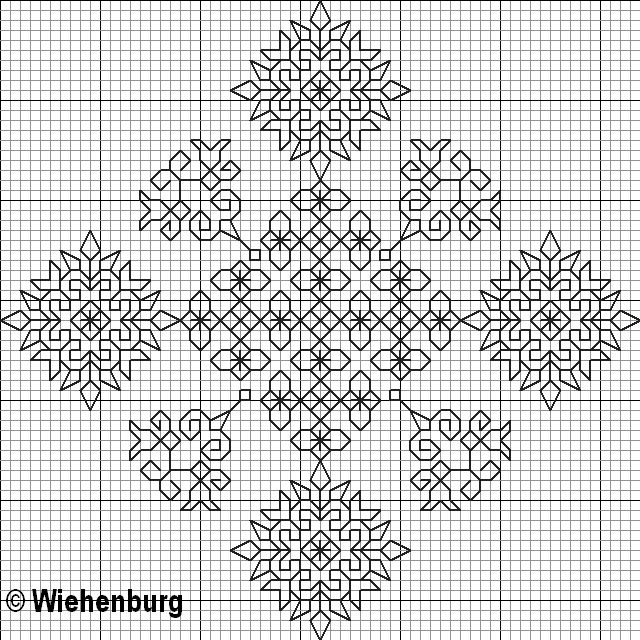Please click on the design title on the left to view the designs and get more information or use the links.
Blackwork or Spanish work
The roots of this stitching technique are hard to trace, however it is believed the techniques originated in the Orient and Islamic countries. Many borders and motifs have geometric characters. You will rarely find images of people or animals in historical Blackwork of Spanish samplers. This is because Islam forbids this type of image.I
In 711 the Moors invaded the Christian Hispania of the Tervingi or Visigoths ("West Goths") under their leader an African Berber General named Tariq ibn Ziyad. Within 8 years they brought most of Spain under Islamic domination.
In 1212, under leadership Alfonse VIII. of Castile, a coalition of Christian kings banished the Moslems out of Spain at the battle of Navas de Tolosa. In 1492, through the conquest of Granada, lead by Spanish king Ferdinand II. of Aragón and his wife Isabella I of Castile; the Reconquista (Re-conquering) finally was concluded.
Katharina of Aragón, the daughter of, Ferdinand of Aragón and Isabella of Castile, was married to the Prince of Wales, Arthur Tudor, who was the son Henry VII of England. This marriage was of short duration. Katharina was widowed after only four months of marriage. Approximately two years later she married Arthur’s brother, Henry VIII.
She brought the blackwork stitching technique, also called Spanish Work, to England and taught it to the ladies of her court. This technique became very popular in the 16th century. Many of her clothes were decorated with blackwork embroidery. One of the motifs on her gown was the pomegranate, which was the coat of arms of Granada where she grew up.
The painter Hans Holbein, the younger, became court painter for Henry VIII. He also painted some of his wives in robes decorated with blackwork embroidery. One such painting shows Jane Seymour, and can be found in the Museum in Vienna.
Here is a small Blackwork Ornament for free:

